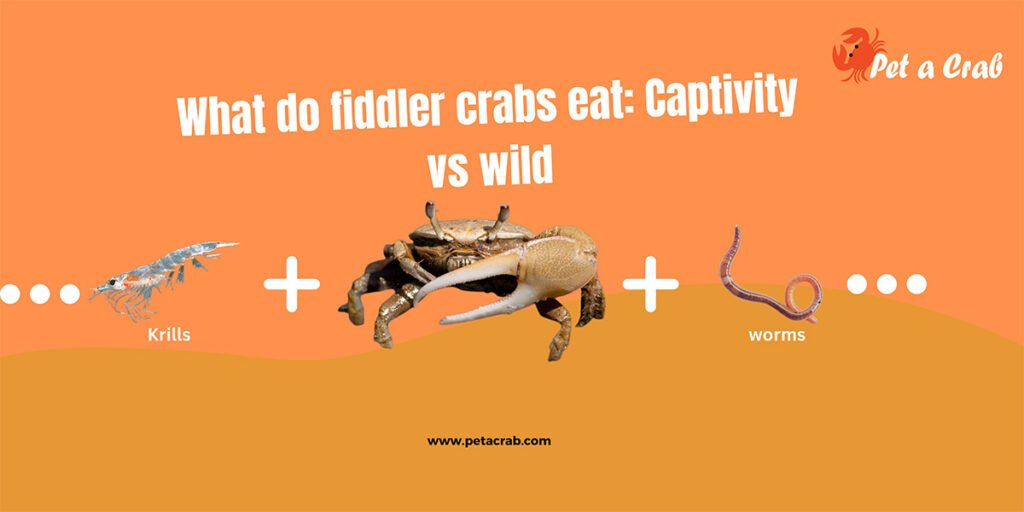Ruggie hermit crab is a dry terrestrial creature. They are mostly found in dunes, sandy areas, and mangroves. Mainly they are found up to 300 m from the beach and also they can’t swim. They are also known as land hermits. These unique creatures can bring immense joy to keep as a pet. However, maintaining them needs a lot of dedication.
This blog will help you to know about essential tips for keeping a healthy Ruggie Hermit Crab. So, let’s start!
Distribution of Ruggie Hermit Crab
Ruggie hermit crab originated from the Indian Ocean and Nias Island. But nowadays they are widely distributed in the Indo-Pacific Ocean. These hermit crabs can be found in Malaysia, Taiwan, Philippines, China, Indonesia, Sri Lanka, Madagascar, Japan, the mainland coast of East Africa, Kenya
etc.
Appearance and Lifespan
Ruggie’s are small in size. A fully grown reach up to 1.2-1.6 inches (3-4cm). They have five pairs of legs and their body is divided into three segments. Their pitchers are on the front legs. The right claws are smaller than the left claws. These claws help crabs to swallow food and defend themselves.
The average lifespan of a Ruggie hermit crab is around 10 years. But in captivity with good care, they can live up to 4-7 years.

Ruggie Hermit Crab Care
If you choose a Ruggie hermit as your pet, you need to care for them. Firstly, create a suitable habitat for your hermit that resembles their natural habitat. You need to design a fitting home for your Ruggie hermit crab. So, let’s set up their home together.
1. Setting an Enclosure
You can choose a glass aquarium as their enclosure. This enclosure provides enough space for your crab to move around and make fun. You need to choose a minimum size of 5-gallon(20 liters) for one or two crabs. Mostly, a bigger aquarium is better for them.
So it’s better to use 10-gallon (40 liters) which gives enough space to your crab. Always use a lid in the tank because if the tank is open the hermit crab can escape.
2. Substrate
Without substrate, they can’t live. You can use sand, and coconut fiber as their substrate. The height of substrates should be at least 10 inches. Ruggie hermit crabs are great at burrowing. So the substrate allows them to bury themselves entirely, a crucial element of their molting behavior. Burrowing space helps to hide, rest, and also protect themselves from molting.
3. Temperature and Humidity
Ruggie hermit needs a perfect temperature to live in the enclosure. Always try to maintain a temperature between 26°c -28°c. Also, it shouldn’t exceed 30°c in the long run. Try to maintain the temperature with a thermometer. You can also use a heater to maintain the temperature.
There should be humidity levels of 70-90% in their enclosure. You can spray in the tank. Also, you can use a hygrometer to check the humidity levels.

4. Water
In their natural life, Ruggies have a constant supply of seawater. But in captivity Ruggie hermit crabs need both saltwater and freshwater to live. The freshwater bowl is for their drink and to moisten their gills. And to consume vital nutrients like calcium they need saltwater. However, having separate dishes for each provides your crab with options that allow them to adjust their intake based on their needs.
To make saltwater you can use instant ocean marine salt. Don’t use table salt or any aquarium salt. You need to ensure the freshwater is chlorine-free because chlorine is toxic to them. Also don’t use tap water cause it has chlorine. But if you want to use it then let it set for 24 hours.
5. Decoration
You can decorate their enclosure to add fun to their life. Decoration helps them to hide and play. In their enclosure, you can use gravel, plants, PVC pipe, etc as decoration. These decorations enrich the enclosure environment that helps to live a good life.
Cleaning
Cleaning their habitat timely is a must. Always remove the uneaten food on time. Because if you don’t remove them they will toxic the enclosure which is harmful for your crab. Also, remove their feces. It will be good for their survival rate.
Clean the water 2 to 3 days in a week. but if you use a filter then clean the water in a week. Clean their water bowl regularly. Cleaning their enclosure will help to increase their survival rate.
Diet of Ruggie Hermit Crab
Like other hermit creatures, Ruggie hermit is also an omnivorous scavenger. They can eat anything that they find. You should give them a combination of fruit, plants, vegetables, and grains which have protein. Also, you need to give them calcium which helps to facilitate proper shell growth.
Cuttlebone, crushed eggshells, and crushed oyster shells are perfect meals that provide essential minerals. Organic and fresh food are best for their diet. These have essential nutrients without harmful additives. Furthermore, always avoid offering food that contains colors as they can harm their health. Mainly you need to ensure their nutritional needs for a healthy and good life.
Ruggie hermit crabs are nocturnal. So they are active at night .Mostly they also eat at night. Adults eat 3-4 times in a week and juveniles should feed daily.

Social Behavior and Tank Mates
Ruggie hermit crabs are sociable animals so they enjoy the company of others. The presence of a companion can be a source of comfort and enrich the little creatures. But you can’t choose too big or too small species as their tank mates. Because big species can prey on them and they can prey on the small ones.
You can keep Ruggies with c.clypeatus sometimes but they should keep with conspecifics. Because it is not evident if the critter can live with other animals like lizards, salamanders, etc. Choose tank mates with care for your Ruggie hermit crab.
Breeding
It is nearly impossible to breed your Ruggie hermit crab in captivity. So the pet industry depends on wild-caught species. Due to high mortality and the insufficient availability of certain environments, they are not bred in captivity.
Wrap Up
Keeping a Ruggie hermit crab as a pet is easy but maintaining them with proper care is hard. That needs a lot of hard work and devotion. Hope this article will help maintain your Ruggie hermit crab healthy.


